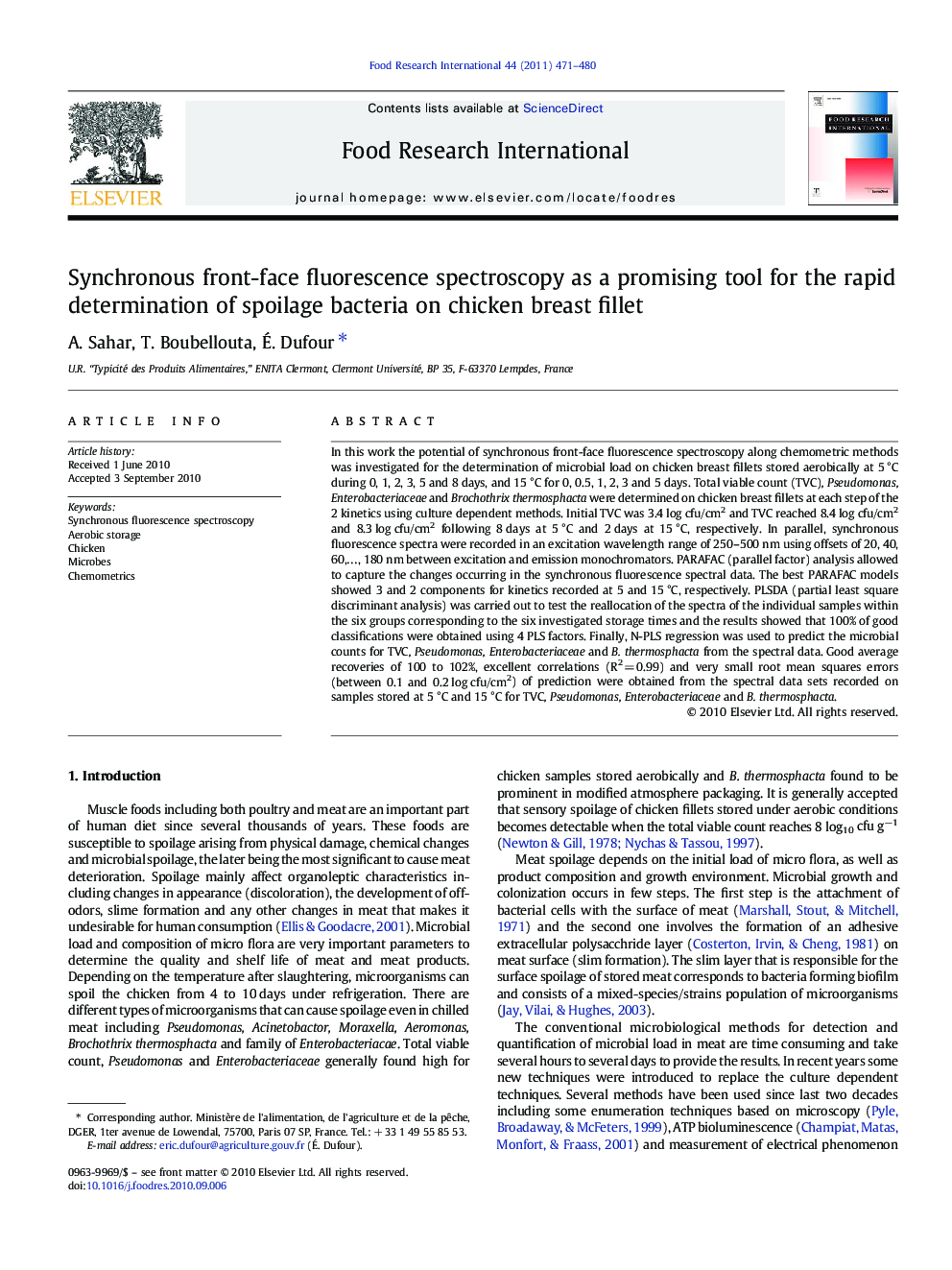| Article ID | Journal | Published Year | Pages | File Type |
|---|---|---|---|---|
| 6400080 | Food Research International | 2011 | 10 Pages |
In this work the potential of synchronous front-face fluorescence spectroscopy along chemometric methods was investigated for the determination of microbial load on chicken breast fillets stored aerobically at 5 °C during 0, 1, 2, 3, 5 and 8 days, and 15 °C for 0, 0.5, 1, 2, 3 and 5 days. Total viable count (TVC), Pseudomonas, Enterobacteriaceae and Brochothrix thermosphacta were determined on chicken breast fillets at each step of the 2 kinetics using culture dependent methods. Initial TVC was 3.4 log cfu/cm2 and TVC reached 8.4 log cfu/cm2 and 8.3 log cfu/cm2 following 8 days at 5 °C and 2 days at 15 °C, respectively. In parallel, synchronous fluorescence spectra were recorded in an excitation wavelength range of 250-500 nm using offsets of 20, 40, 60,â¦, 180 nm between excitation and emission monochromators. PARAFAC (parallel factor) analysis allowed to capture the changes occurring in the synchronous fluorescence spectral data. The best PARAFAC models showed 3 and 2 components for kinetics recorded at 5 and 15 °C, respectively. PLSDA (partial least square discriminant analysis) was carried out to test the reallocation of the spectra of the individual samples within the six groups corresponding to the six investigated storage times and the results showed that 100% of good classifications were obtained using 4 PLS factors. Finally, N-PLS regression was used to predict the microbial counts for TVC, Pseudomonas, Enterobacteriaceae and B. thermosphacta from the spectral data. Good average recoveries of 100 to 102%, excellent correlations (R2 = 0.99) and very small root mean squares errors (between 0.1 and 0.2 log cfu/cm2) of prediction were obtained from the spectral data sets recorded on samples stored at 5 °C and 15 °C for TVC, Pseudomonas, Enterobacteriaceae and B. thermosphacta.
